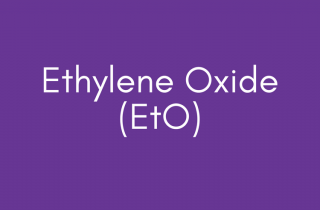Alkylphenols
What are alkylphenols?
Alkylphenols are used to make alkylphenol ethoxylates, surfactants that increase the efficiency of detergents and other cleaning products. They are also used as raw materials in the production of plastics and pesticides.[1] One of the most common alkylphenols is 4-nonylphenol (4-NP).[2]
Where are alkylphenols found?
Alkylphenols are found in many industrial and household cleaning products. Traces of alkylphenols can also be found in leather textiles, agricultural chemicals, spermicides, and plastics.[3],[4]
In a study of air contamination in 120 homes, 100 percent of the homes contained alkylphenols.[5] These chemicals also persist in the outdoor environment, found in sewage water, aquatic environments, and groundwater.[6],[7]
Some alkylphenols such as nonylphenol (NP), are used as additives in pesticides, leading to their presence in certain foods. The types of foods that contain NP vary in different regions of the world. For instance, in Sweden[8] they were found to be more prevalent in fruits, vegetables and cereals, whereas in Taiwan they were more common in meat and fish.[9]
What evidence links alkylphenols to breast cancer?
Alkylphenols are endocrine disruptors that have the ability to mimic or disrupt estrogen hormones. Biological processes that are generally controlled by estrogen, such as cell communication and protein formation, can be altered when cells are exposed to alkylphenols.[10]
- Women who are exposed occupationally to alkylphenols have an increased risk of developing breast cancer.[11]
- Mice treated with 4-NP developed mammary cancer at higher rates and experienced higher rates of metastasis at younger ages.[12]
- An in vitro study on breast cancer cells showed that 4-NP has the ability to increase the activity of the enzyme responsible for creating estriol, an estrogenic hormone. High levels of estrogen have been linked to breast cancer.[13]
- Alkylphenols were also shown to increase the replication rates of estrogen-dependent breast cancer cells in an in vitro study on breast cancer cells.[14]
Who is most likely to be exposed to alkylphenols?
A study completed by the National Health and Nutritional Examination Survey found that 51 percent of the tested population had detectable amounts of 4-NP in urine samples. No significant differences were observed in amount of 4-NP among categories of age, race or gender.[15]
Similar levels of 4-NP and octylphenol have also been detected in blood serum and breast milk samples in breast-feeding women. These chemicals can be passed on to infants, though the benefits of breast-feeding outweigh the potential risk.[16],[17],[18]
Who is most vulnerable to the health effects?
Pregnant women, fetuses and young children are most vulnerable to alkylphenols, because at these life stages breast tissue is most susceptible to endocrine disruptors.[19]
What are the top tips to avoid exposure?
- Read labels and avoid products containing the following alkylphenols: propylphenol, butylphenol, amylphenol, heptylphenol, octylphenol, nonylphenol, dodecylphenol, methylphenol and ethylphenol.
- Dispose of household chemicals properly, by using a free household hazardous waste pick-up, or any other safe disposal method
Updated 2019
[2] Annamalai, Jayshree, and Vasudevan Namasivayam. “Endocrine disrupting chemicals in the atmosphere: Their effects on humans and wildlife.” Environment International 76 (2015): 78–97. doi:10.1016/j.envint.2014.12.006.
[3] Annamalai, Jayshree, and Vasudevan Namasivayam. “Endocrine disrupting chemicals in the atmosphere: Their effects on humans and wildlife.” Environment International 76 (2015): 78–97. doi:10.1016/j.envint.2014.12.006.
[4] Kráľová, Katarína and Josef Jampílek, “Impact of environmental contaminants on breast cancer.” Ecological Chemistry and Engineering 2, 1 (2015): 9-44. doi:10.1515/eces-2015-0001.
[5] Dunagan, Sarah C., Robin E.Dodson, Ruthann A.Rudel and Julia G.Brody. “Toxics Use Reduction in the Home: Lessons Learned from Household Exposure Studies.” Journal of Cleaner Production 19, 5 (2011), 438–444. doi:10.1016/j.jclepro.2010.06.012.
[6] Koniecko, Iga et al. “Alkylphenols in Surface Sediments of the Gulf of Gdansk (Baltic Sea).” Water, Air, and Soil Pollution 225 (2014): 2040. doi:10.1007/s11270-014-2040-8.
[7] Fujita, M. et al. “Behaviour of nonylphenol ethoxylates in sewage treatment plants in Japan – biotransformation and ecotoxicity.” Water, Science and Technology 42, 7-8 (2000): 23–30. doi:10.2166/wst.2000.0548.
[8] Gyllenhammar, Irina et al. “4-Nonylphenol and bisphenol A in Swedish food and exposure in Swedish nursing women.” Environment International 43 (2012): 21-8. doi:10.1016/j.envint.2012.02.010.
[9] Lu, Yu-Yu et al. “Daily intake of 4-nonylphenol in Taiwanese.” Environment International 33, 7 (2007): 903-10. doi:10.1016/j.envint.2007.04.008.
[10] Annamalai, Jayshree, and Vasudevan Namasivayam. “Endocrine disrupting chemicals in the atmosphere: Their effects on humans and wildlife.” Environment International 76 (2015): 78–97. doi:10.1016/j.envint.2014.12.006.
[11] Perimiquesl-Trillas, Paula, et al. “Alkylphenolic compounds and risk of breast and prostate cancer in the MCC-Spain study.” Environment International 122 (2019): 389–99. doi:10.1016/j.envint.2018.12.007.
[12] Acevedo, Richard et al. “The contribution of hepatic steroid metabolism to serum estradiol and estriol concentrations in nonylphenol treated MMTVneu mice and its potential effects on breast cancer incidence and latency.” Journal of Applied Toxicology 25, 5 (2005) 339–353. doi:10.1002/jat.1078.
[13] Kráľová, Katarína and Josef Jampílek, “Impact of environmental contaminants on breast cancer.” Ecological Chemistry and Engineering 2, 1 (2015): 9-44. doi:10.1515/eces-2015-0001.
[14] Maras, Marleen et al. “Estrogen-Like Properties of Fluorotelomer Alcohols as Revealed by MCF-7 Breast Cancer Cell Proliferation.” Environmental Health Perspectives 114, 1 (2006): 100-105. doi:10.1289/ehp.8149.
[15] Calafat, Antonia M et al. “Urinary concentrations of bisphenol A and 4-nonylphenol in a human reference population.” Environmental health perspectives 113, 4 (2005): 391-5. doi:10.1289/ehp.7534.
[16] Centers for Disease Control and Prevention. “Environmental Exposures/Toxicants.” Last modified June 23, 2020.
http://www.cdc.gov/breastfeeding/disease/environmental_toxins.htm.
[17] Gyllenhammar, Irina et al. “4-Nonylphenol and bisphenol A in Swedish food and exposure in Swedish nursing women.” Environment International 43 (2012): 21-8. doi:10.1016/j.envint.2012.02.010.
[18] Lu, Yu-Yu et al. “Daily intake of 4-nonylphenol in Taiwanese.” Environment International 33, 7 (2007): 903-10. doi:10.1016/j.envint.2007.04.008.
[19] IBCERCC. “Breast Cancer and the Environment. Prioritizing Prevention.” Last modified February 2013. http://www.niehs.nih.gov/about/assets/docs/ibcercc_full_508.pdf.






